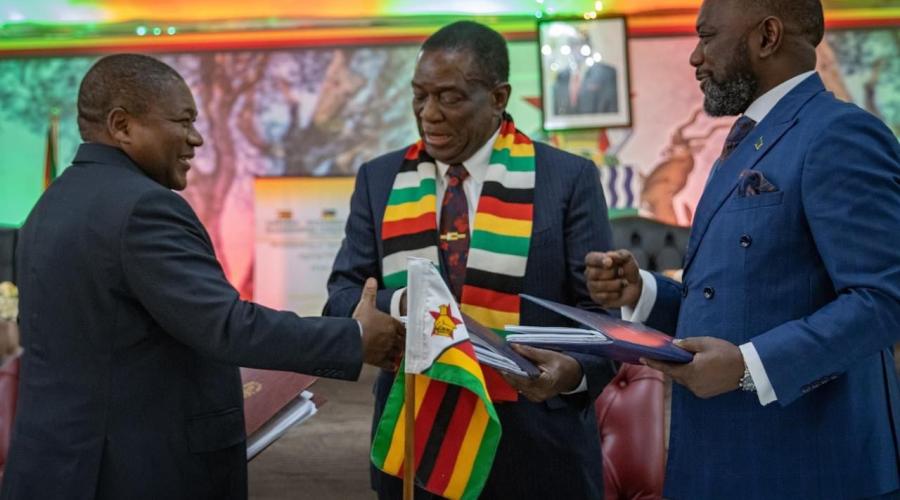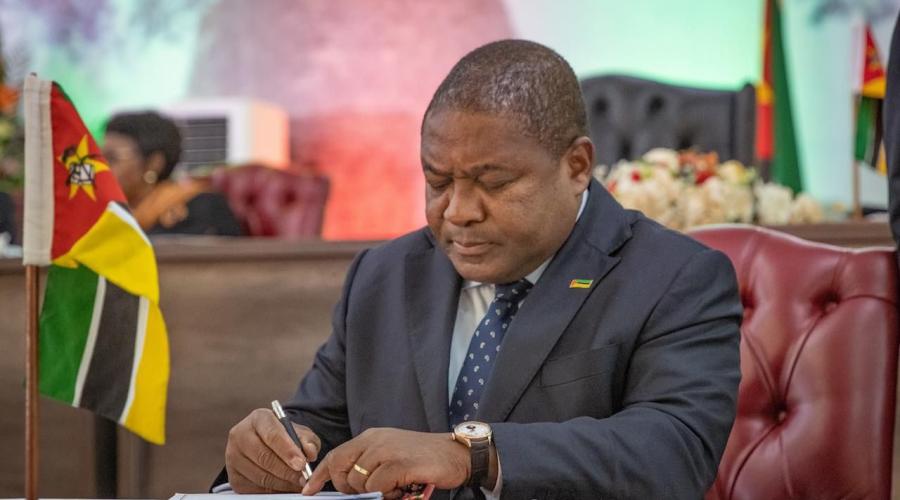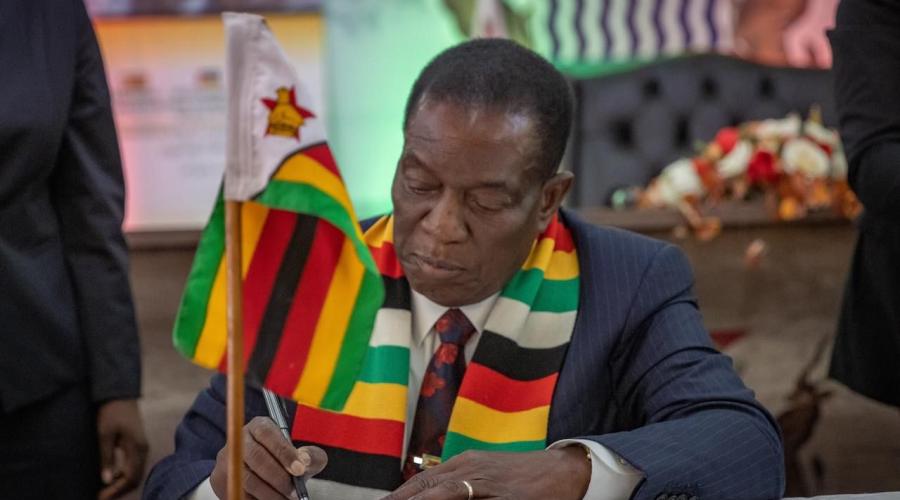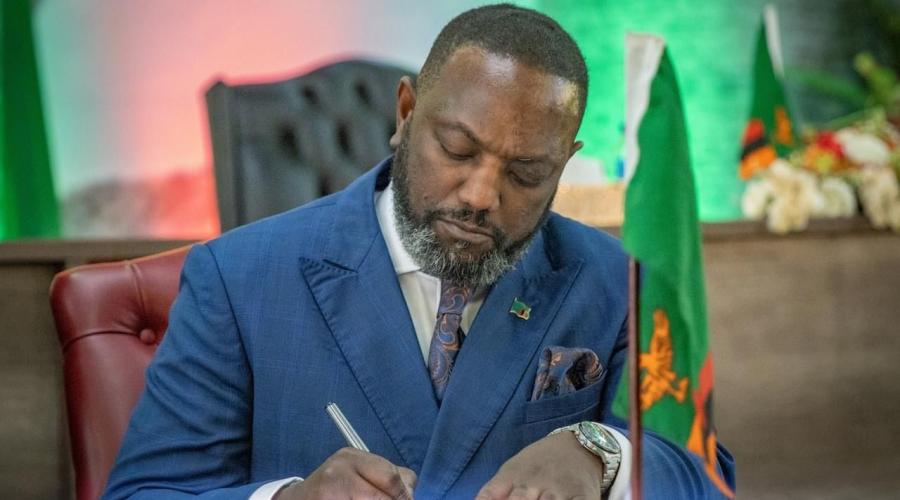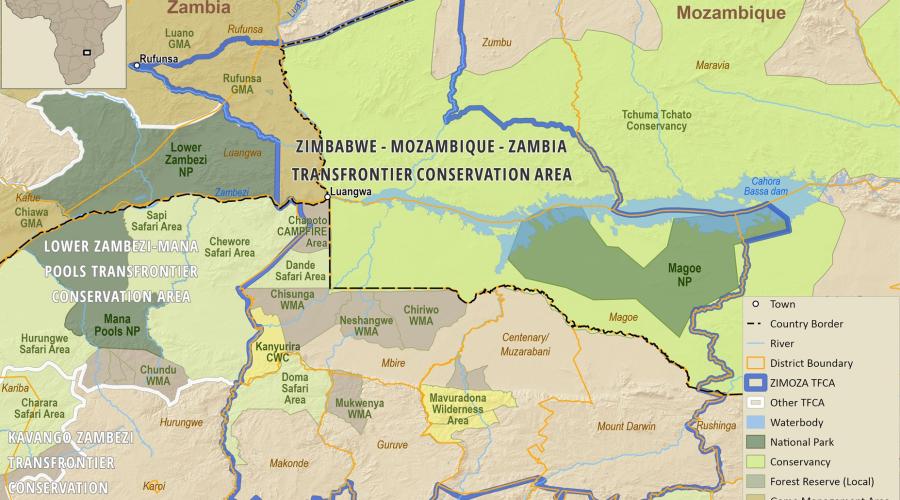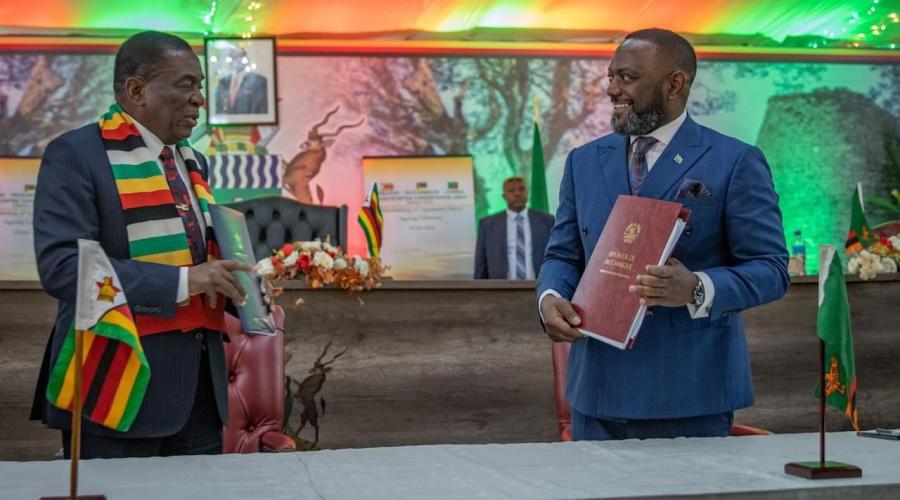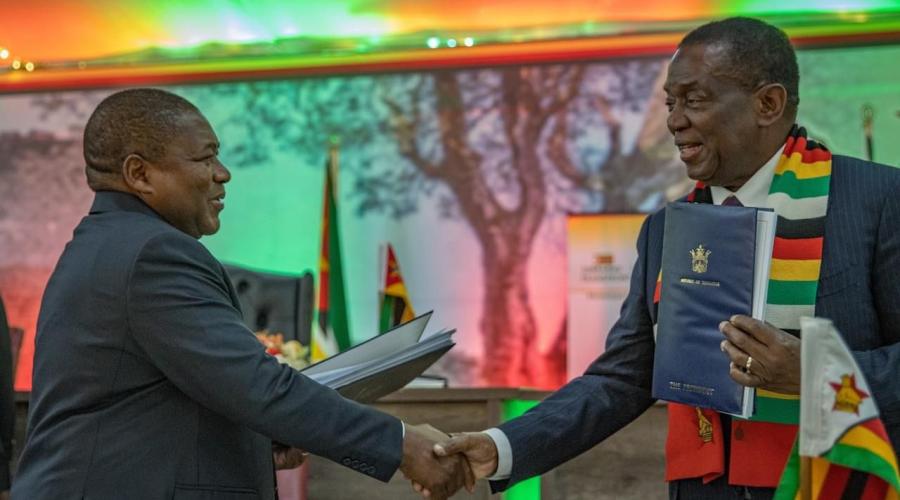Celebration as three Countries sign the Zimbabwe/Mozambique/Zambia Transfrontier Conservation Area Agreement

In a landmark event, the Memorandum of Agreement (MoA) for the Zimbabwe, Mozambique, and Zambia (ZIMOZA) Transfrontier Conservation Area (TFCA) was signed at the State House in Harare on the 18th July 2024.
The MoA was signed by the three Heads of States from the partner countries: Zimbabwe, Mozambique and Zambia, following nearly 30 years since the idea of a large transboundary conservation and development landscape was proposed. This programme is part of SADC’s Regional Integration efforts which include a TFCA development strategy.
The signing of the MoA was witnessed by Cabinet Ministers from the partner states, the SADC Executive Secretary, senior officials, members of the diplomatic corps, traditional leaders, International Collaborating Partners, local authorities, civil society organizations, and faith-based organizations.
About The ZIMOZA TFCA
The ZIMOZA TFCA spans approximately 39,165 km², covering districts in Zimbabwe, Mozambique, and Zambia. This initiative aligns with the SADC Protocols on Wildlife Conservation and Environmental Management, promoting the conservation of shared wildlife resources through the establishment of TFCAs. The ZIMOMZA TFCA will contribute to the protection of a variety of endangered species including elephant, hippopotamus, buffalo, lion, leopard, sable and roan. The area also attacks over 300 bird species.
Areas covered by the new TFCA are the districts of Mbire, Muzarabani, Guruve, Mt Darwin and part of Makonde (wards 1, 2 and 11) in the Republic of Zimbabwe, the Administrative Posts of Zumbo-Sede and Zâmbue in Zumbu District; the District of Mágoè in its extension and at the level of the District of Cahora Bassa, the locality of Nhabando in the Administrative Post of Chitima in the Republic of Mozambique and Luangwa and Rufunsa Districts in Republic of Zambia.
Mozambique President Filipe J. Nyusi noted that “this TFCA builds on the Community Based Natural Resource policies of all three countries. He hopes that the 600 000 people living in the TFCA will derive benefit for good land management. The SADC Member states are committed to Sustainable Development and the TFCA program is a tool to align cross border land use and sustainable development programs.”
Examples of the national CBNRM programs include Community-based Natural Resource Management (CBNRM) is implemented on the Zambian side, while the Communal Areas Management Programme for Indigenous Resources (CAMPFIRE) programme is run in Mozambique and Zimbabwe to facilitate beneficiation to communities in the Zambezi valley. To accurately inform management decisions and strategic planning, there is a need for the TFCA to engage communities in risk and vulnerability assessments around a host of human-environment relationships. It is hoped that by increasing the tourism potential of the TFCA, communities can be actively engaged and benefit from local employment and the sale of goods and services
President Nyusi of Mozambique noted that:
We are one single people but separated by colonial borders. In addition, elephants have nothing to do with man-made borders. This TFCA is one of the ways to correct one of the crimes of colonialism which was to divide and rule. There will be no univisa problem with Mozambique.
The ZIMOZA TFCA is part of the Zambezi riparian ecosystem including miombo forests. These forests are a priority environmental concern and recently the Maputo declaration that covers 11 countries aimed at the sustainable and integrated management of the miombo forests was agreed.
The sustainable use of natural resources
Ms. Angele Makombo N’tumba the SADC Deputy Executive Secretary (Regional Integration) representing The SADC Executive Secretary noted that:
this is a remarkable event showing trust in the secretariat promoting regional integration. She hoped that the MoA being operationalised will contribute to the Member States reporting in terms of UN Convention on Biodiversity.
The MoA reaffirms the commitment of the three countries to the sustainable use of natural resources, benefiting both present and future generations. The agreement emphasizes good neighbourliness and strategic alliances to achieve several objectives, including:
- Promoting biodiversity conservation and ecosystem restoration.
- Ensuring sustainable management and utilization of natural resources.
- Realizing the economic potential of the TFCA for local communities.
- Promoting cultural heritage conservation and sustainable development.
- Developing knowledge management tools for conservation efforts.
- Enhancing cross-border cooperation for trade, investment, and socio-economic development.
- Harmonizing policies and practices related to environmental management, trade, and tourism.
- Integrating TFCA management systems into national plans and policies.
Mr. Rodney Sikomba, Zambian Minister of Tourism, Envronment and Natural Resources said that:
this is a golden opportunity to share ways of dealing with HWC. At the KAZA summit we committed to the UNVISA and want it extended to Moz and the entire SADC. We are transcending political boundaries in pursuit of sustainable development and conservation along with shared water courses. The question is how to sweat this resource including carbon trading. Zambia lost 1 million hectares of white maize in the current drought and increased HWC can be seen as wildlife seek more food. Pledge to work together and enhance regional peace. Also embark on a journey of collaboration and regional development.
Future Coordination
Zimbabwe will serve as the coordinating country for the next two years, followed by Mozambique and Zambia on a rotational basis. The state parties also agreed to establish a Secretariat and other institutional structures, including a funding mechanism, to facilitate the coordination and joint management of the ZIMOZA TFCA. It was noted that the progress so far had been supported by many international organizations and NGOs.
President Dr. Emmerson D. Mnangagwa of Zimbabwe said that:
the TFCA represents a new era of cooperation between the 3 countries. The agreement provides us with another tool to achieve African Union 2063 vision and the UN sustainable development goals.
This TFCA will be the 6th TFCA that Zimbabwe is part of. The experience with KAZA, GMTFCA, GLTFCA, Lower Zambezi/Mana pools and Chimanimani should embolden us to know how to manage the ZIMOZA.
Community involvement is critical and this MOA is the product of consultations with the affected communities. We must expedite the planning and implementation so communities can see the benefit.
The establishment of ZIMOZA TFCA as the 13th TFCA in the SADC region is a significant milestone within the context of the SADC TFCA programme which is supported by the Joint Action / Climate Resilience and Natural Resource Management (C-NRM) Programme - a partnership programme between SADC, the European Union (EU), and Federal Ministry for Economic Cooperation and Development (BMZ). The SADC TFCA programme aims to promote regional integration and cooperation through the sustainable management of transboundary natural resources. By bringing together multiple countries to jointly manage conservation areas, the programme seeks to enhance biodiversity conservation, support ecosystem services, and improve the livelihoods of local communities.
Report by Steve Collins, SADC TFCA Network Co-ordinator


